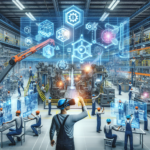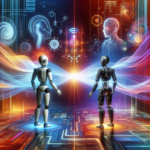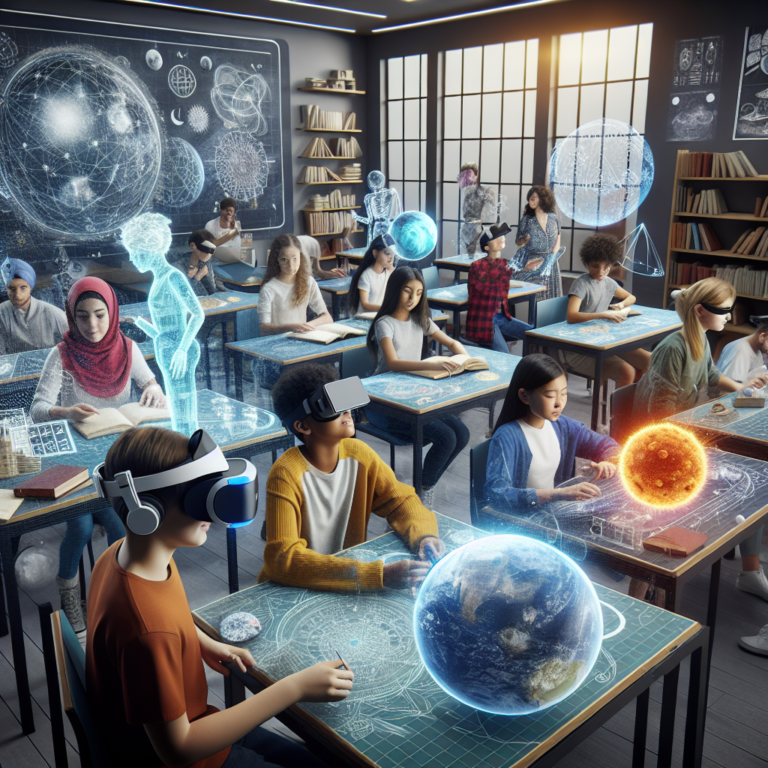Transforming Education: How Immersive Technologies are Elevating Personalized Learning Experiences 🎓
Introduction to Immersive Technologies
In today’s fast-paced digital world, education is undergoing a radical transformation. The adoption of immersive technologies—including Virtual Reality (VR), Augmented Reality (AR), and mixed reality—has radically changed the traditional learning landscape. These groundbreaking tools are not just enhancing educational content; they are offering personalized learning experiences that cater to individual students’ needs, preferences, and learning styles. Let’s explore how these technologies are revolutionizing the way we learn!
What are Immersive Technologies?
Before we delve into their impact on personalized learning, it’s essential to understand what immersive technologies entail:
- Virtual Reality (VR): A computer-generated simulation that immerses the user in a lifelike environment.
- Augmented Reality (AR): A technology that overlays digital information onto the real world, enhancing the user’s perception and interaction.
- Mixed Reality (MR): A blend of VR and AR that allows physical and digital objects to coexist and interact in real-time.
The Need for Personalized Learning
Education is not a one-size-fits-all approach. Each student has unique strengths, weaknesses, interests, and learning paces. Traditional classrooms often struggle to accommodate these differences, leading to disengagement and lackluster academic performance. That’s where personalized learning comes into play. This approach facilitates tailored educational experiences that aim to:
- Engage students by making learning relevant to their lives.
- Enhance retention and understanding through individualized pacing.
- Boost motivation by leveraging students’ interests and hobbies.
How Immersive Technologies Drive Personalization
Immersive technologies have a profound impact on personalized learning methodologies. Here are some ways they are enhancing individual learning experiences:
1. Expanding the Learning Environment 🌍
Immersive technologies enable learners to explore virtual worlds that extend far beyond the confines of a traditional classroom. Students can:
- Visit historical sites in VR, offering rich contextual learning.
- Conduct scientific experiments in safe, controlled environments.
- Experience complex concepts, such as the universe, molecular structures, or body systems, in an engaging manner.
2. Catering to Different Learning Styles
Each learner has a unique style—some thrive in visual contexts, while others benefit from hands-on activities. Immersive technologies allow educators to tailor lessons, catering to:
- Visual learners: 3D models and animations create vivid representations of concepts.
- Auditory learners: Interactive lessons can incorporate sounds and spoken instruction.
- Kinesthetic learners: VR simulations that require physical interaction foster deeper engagement.
3. Fostering Engagement and Motivation 🎉
One of the most significant challenges in education is keeping students motivated. Immersive technologies can provide a sense of adventure and discovery that traditional learning methods often lack. Features such as gamification and interactive challenges motivate students to:
- Compete with peers in educational games.
- Earn rewards for completing tasks or achieving goals.
- Work collaboratively in virtual teams to solve problems.
4. Real-Time Feedback and Adaptation 🕒
Immersive learning platforms often come equipped with built-in analytics tools that provide real-time feedback to students and educators. This capability allows for instant assessments and adaptations based on performance, helping to:
- Identify areas needing improvement.
- Adjust learning pathways according to student progress.
- Offer additional resources and support as necessary.
Success Stories: Real-World Applications
Immersive technologies have already begun to demonstrate their potential in classrooms and training environments worldwide. Here are a few inspiring examples:
1. Virtual Reality in Medical Training
Medical schools are harnessing the power of VR to create realistic simulations for students. Future doctors can practice surgical procedures in a safe, controlled setting, allowing for hands-on experience without risk. This method boosts confidence and proficiency before students transition to real patient interactions.
2. Augmented Reality in Engineering
Engineering students are using AR to visualize blueprints and complex machinery in 3D. This interactive approach enhances their understanding of intricate designs and fosters creative problem-solving.
3. Language Learning through Immersive Environments
Language learners are using immersive technologies to find themselves in virtual marketplaces or tourist destinations where they can practice conversations in real-world scenarios. This immersion accelerates learning and boosts fluency.
The Future of Personalized Learning with Immersive Technologies
As technology continues to evolve, the future for personalized learning looks bright. Innovations such as artificial intelligence may add another layer of customization, using data analytics to further tailor experiences. Imagine a world where learning environments are not just immersive, but also intelligent enough to understand and adapt to each learner’s ever-changing needs.
Conclusion
The integration of immersive technologies into education not only represents a major shift in teaching methodologies but also heralds the promise of truly personalized learning experiences. As we move forward, the impact of these technologies will likely expand, creating exciting, engaging, and effective educational landscapes that enhance student outcomes and foster lifelong learning. 🌟




0 Comments